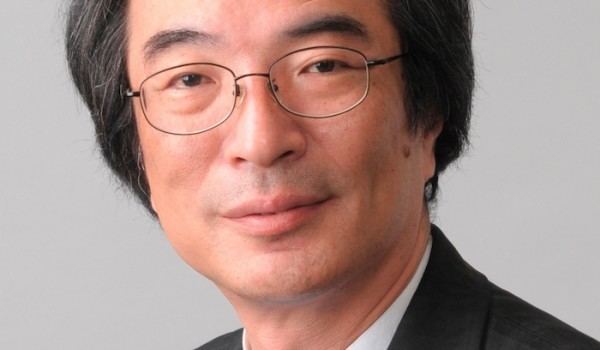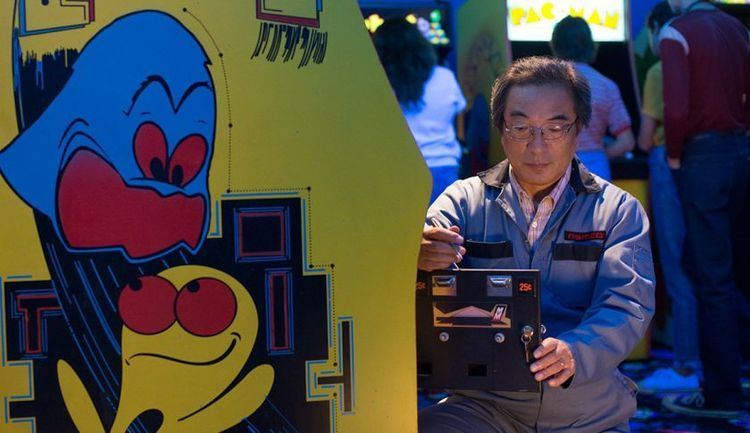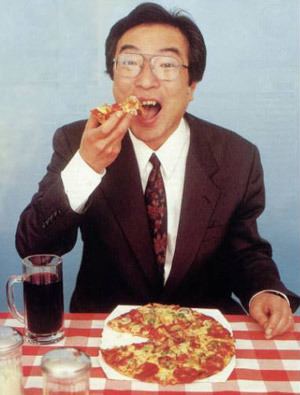Occupation Video game designer Name Toru Iwatani | Role Video Game Designer | |
 | ||
Video games Pac‑Man, Pac‑Man Championship Edition, Libble Rabble, Gee Bee, Super Pac‑Man Similar People Denis Akiyama, Jaron Lanier, Dan Bricklin, Gary Kildall, Bill Gates | ||
Pac man the story of toru iwatani and the pizza that revolutionized arcade games
Toru Iwatani (岩谷 徹, Iwatani Tōru, born January 25, 1955) is a Japanese video game designer. He is best known as the creator of the arcade games Pac-Man (1980) and Pole Position (1982).
Contents
- Pac man the story of toru iwatani and the pizza that revolutionized arcade games
- Professor Toru Iwatani Game Development Training with the Creator of Pac Man Gamelab 2015 Panel
- Early life
- Career
- Writings
- References

Professor Toru Iwatani - Game Development Training with the Creator of Pac-Man - Gamelab 2015 Panel
Early life

Iwatani was born in Meguro ward of Tokyo, Japan. He was self-taught, without any formal training in computers, visual arts, or graphic design. For example, he filled his school textbooks with scattered manga, which went on to influence the character designs in his video games.
Career

He joined the computer software company Namco in 1977. This was where he started his career in the video game business. There, he came up with the idea for a game called "Pakku-Man" and in 1980, he, along with programmer Shigeo Funaki (舟木 茂雄), a hardware engineer, a cabinet designer and Toshio Kai (甲斐 敏夫) for sound and music, finished the game. It was released to the Japanese public on May 22 of that year, where it became a huge success. It caught the attention of arcade-game manufacturer Midway, who bought the United States rights for the game and released the game in the U.S. as Pac-Man. Due to its innovative concept and continuing international popularity, it is regarded as one of the all-time classic video games. Iwatani returned to his Pac-Man roots in 2007 when he developed Pac-Man Championship Edition for the Xbox 360, which he states is the final game he will develop.
Iwatani went on to create a few other video games, including Libble Rabble, but none of them reached the amount of success that Pac-Man did. He was promoted within the ranks of Namco, eventually being responsible for overseeing the administration of the company. In a VH-1 Game Break interview, Iwatani said he did not personally profit from the creation of Pac-Man, saying, "The truth of the matter is, there were no rewards per se for the success of Pac-Man. I was just an employee. There was no change in my salary, no bonus, no official citation of any kind."
Iwatani's greatest success after Pac-Man was Pole Position (1982), which became a major arcade hit and is considered the most influential racing video game of all time.
From April 2005, he taught the subject of Character Design Studies at Osaka University of Arts as visiting professor. Iwatani left Namco in March 2007 to become a full-time lecturer at Tokyo Polytechnic University.
On June 2, 2010 just before visiting an event called the Festival of Games in the Netherlands, Iwatani was photographed showing the original sketches of Pac-Man, making it the first public appearance of these designs.
The next day, June 3, 2010, at the Festival of Games, Iwatani received a certificate from Guinness World Records for Pac-Man having the most "coin-operated arcade machines" installed worldwide: 293,822. The record was set and recognized in 2005, and recorded in the Guinness World Records: Gamer's Edition 2008.
Iwatani made a cameo appearance in the film Pixels, which prominently features Pac-Man as an antagonist. A fictionalized version of Iwatani, portrayed by Denis Akiyama, also appears in the film.
